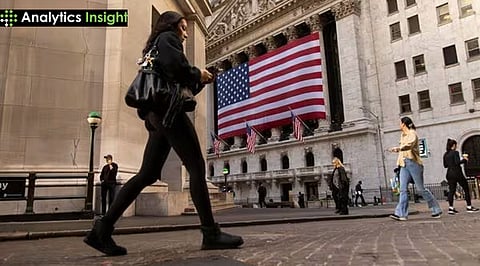

US equities advanced on Friday, with major indexes reaching fresh records even as the federal government shutdown entered its third day. The Dow Jones Industrial Average climbed 512 points, or 1.1%, while the S&P 500 rose 0.5%. The NASDAQ Composite added 0.3%, and the Russell 2000 gained 1.5%. All four benchmarks closed at all-time highs.
The rally pushed weekly gains higher across the board. The S&P 500 and Dow Jones each advanced more than 1% for the week, while the NASDAQ gained nearly 2%. The Russell 2000 outperformed, adding 2.5% over the same period. Investors largely shrugged off concerns about the shutdown, focusing instead on expectations of continued momentum in the technology and artificial intelligence sectors.
Despite political uncertainty, historical precedent suggests that shutdowns rarely produce long-lasting effects on equity markets. During the 2018 closure, the S&P 500 briefly declined before recovering strongly, ending the period with double-digit gains. Many traders expect a similar pattern this time, with the current focus remaining on Federal Reserve policy and corporate earnings.
The ongoing shutdown has already caused disruptions to federal reporting. The Labor Department delayed the release of September nonfarm payrolls, creating a temporary gap in economic data. This blackout limits the information available for the Federal Reserve ahead of its October policy meeting.
Private-sector data has indicated a softening of labor conditions, with ADP reporting the sharpest payroll decline since March 2023. Analysts suggest this weakness supports expectations for another quarter-point interest rate cut. The CME FedWatch tool shows markets broadly anticipate a rate reduction later this month. Yields reflected the outlook, with the 10-year Treasury note edging up to 4.10% but remaining at a historically low level.
Treasury Secretary Scott Bessent warned that a prolonged shutdown could damage economic growth, with the Congressional Budget Office estimating that 750,000 federal employees would be furloughed daily. However, market participants continue to price in only the short-term financial impact.
Technology and artificial intelligence-related companies continued to drive gains. Small-cap and growth shares outperformed, with optimism fueled by corporate partnerships and acquisitions in the data infrastructure and energy sectors. Recent AI investments, including a $500 billion valuation milestone for OpenAI, reinforced sentiment that capital inflows will sustain sector growth.
Commodities also moved higher. Gold rose 0.9% to $3,889.41 an ounce, marking its seventh consecutive weekly advance, supported by central bank purchases and lower interest rate expectations. West Texas Intermediate crude gained 0.9% to $61.04 per barrel but remained on track for its most significant weekly decline since June, ahead of an OPEC+ policy meeting.
In currency markets, the Bloomberg Dollar Spot Index fell 0.2%, extending a broader year-to-date decline. The euro and British pound each rose 0.3%, while the yen held steady. Analysts identified the dollar as the US asset most vulnerable to shutdown-related volatility, while gold was viewed as the most reliable safe haven.
Also Read: S&P 500 and NASDAQ Soar, Wall Street Rallies on Intel-AMD Talks & OpenAI's $500B Valuation
